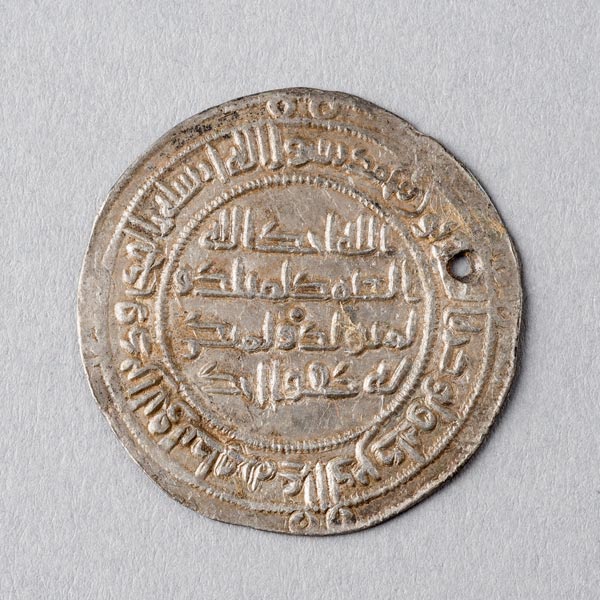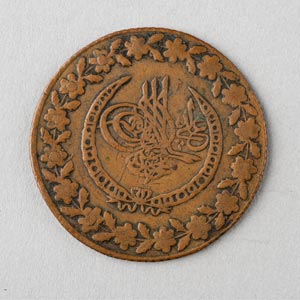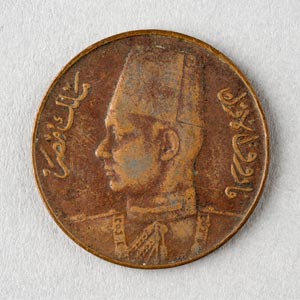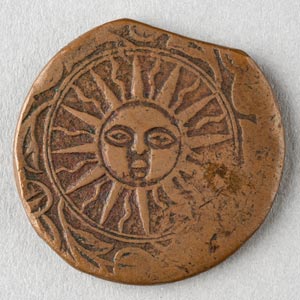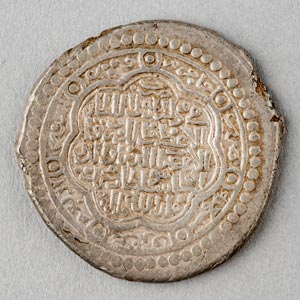Umayyad Dirham
The Show

Umayyad dirham 8th century, Spain Silver Kelsey Museum of Archaeology, 2009.1.174
The first Muslim rulers to mint their own coins adopted and adapted the international language of coinage symbolism. However, by the late 7th century new designs began to set Islamic coins apart from other currencies in circulation. Islamic coins became largely epigraphic, as exemplified by this silver coin, or dirham, which was minted in Spain (al-Andalus) during the rule of the Umayyad caliph al-Hisham (723–743). This dirham includes the Muslim monotheistic creed along with the 112th chapter from the Qur’an (Surat al-Ikhlas), which proclaims God's all-encompassing unity. For the early Muslim caliphs who ruled from the Arabian Peninsula all the way to Spain, one of the most important declarations of their international standing and authority was the minting of coins. Last but not least, this particular dirham is also pierced with a hole, suggesting that in later centuries it may have functioned as a pendant or amulet.
Bibliography: Wasserstein 1993; Heidemann 2010; Al-Saa’d 1999; Bates 1982, 46–61; Bates and Darley-Doran 1985, 393; Klat 2002; Miles 1950, 140–142; and Dodds 1992, 384–391, cat. no. 127
Return to the Show